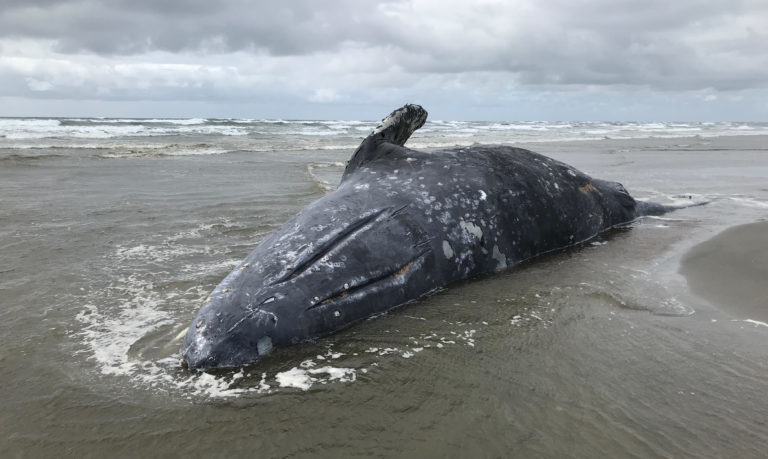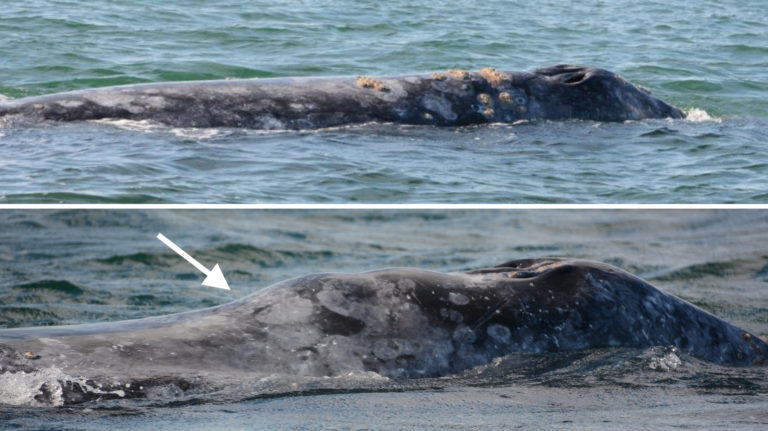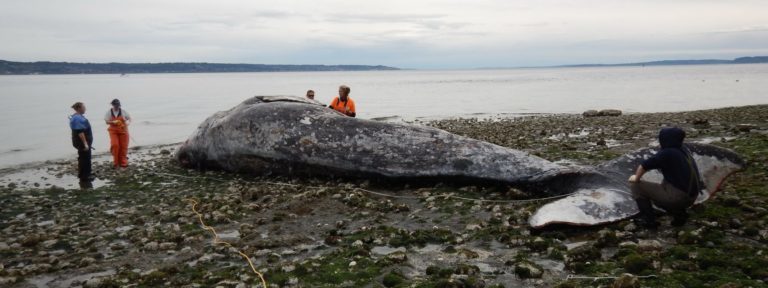
The pink wasn't anything artificial, officials learned when they arrived to tow the skinny male to shore near Victoria for a necropsy last April.
It was the animal's own flesh, eaten raw by whale lice.
Two weeks later, another, off Tofino. Then the islands of Haida Gwaii, where a total of six would wash ashore this year. The epic migration the whales make every spring — more than 10,000 kilometres from breeding lagoons in Mexico to a summer feeding in the Bering Sea — had turned deadly.
"It was quite disturbing to see," said Paul Cottrell, regional marine mammal co-ordinator with Fisheries and Oceans Canada. "When they become compromised, their immune system is obviously not able to deal with that, and they get eaten alive."
"We had these kind of zombie whales swimming in our waters."
By year's end, 11 were stranded in B.C., where there are normally just one or two.
Along the migration route from Mexico to Alaska, the toll reached 214 dead whales — and those are just the ones that washed up. The true die-off is unknown, possibly between 1,000 and 2,000 whales.
The underlying cause — whether an undiscovered pathogen, or the changing climate of the Arctic where they feed — remains a mystery.
In May, the U.S. National Oceanic and Atmospheric Administration declared an "unusual mortality event," or UME, and launched a special investigation with a cross-border team of scientists. Since then, the issue has faded from the headlines, but the scientists have quietly continued that work.
And as recently as last month — when the migrating whales should be "fat and healthy" on their way south — skinny whales were still washing up dead.
A late arrival
The first sign of a problem wasn't in Canadian waters last spring, but Mexico the year before.
Grey whales on the West Coast spend their winters in Mexican waters; hundreds gather at a time in the warm-water lagoons of the Baja peninsula, breeding and raising young.
"You will see whales blowing in every direction," said Steven Swartz, co-director of the Laguna San Ignacio Ecosystem Science Program, who has studied whales there since the 1970s.
His team saw the early hints that something was off.
Normally, the first grey whales start to arrive at the lagoons around mid-January, but in 2018 they were several weeks behind schedule. They arrived skinnier than normal, and had fewer calves.
In 2019, the same pattern emerged. Scientists on Swartz's team documented in photographs that about a quarter of the whales without calves were in poor condition, with deep indentations where there should be blubber, which is "really unusual," he said.

"But they weren't, so that was alarming."
In January 2019, the strandings began. First in Mexico, then up the coast of California, Oregon and Washington as the struggling whales tried to make their way north.
It felt very familiar for John Calambokidis, a research biologist who is part of the UME investigation team and founder of Cascadia Research in Olympia, Wash.
"This is really feeling a lot like 1999," he said. "That was the first thing that struck me."

This isn't the first time grey whales have washed up dead by the hundreds.
Calambokidis and Swartz both remember 20 years ago — the last UME for grey whales — when 283 stranded in 1999, and another 368 the following year.
Then, as now, the population was above 25,000 whales.
And then, as now, the animals appeared to be starving, said Calambokidis. Not just the normal skinny that happens as fat stores are used on a long migration, but so emaciated that when they cut into the skin during a necropsy, the blubber felt dry.
"I know it's kind of hard to imagine, a blubber area without any oil in it."
Necropsies in B.C. showed the same thing, but experts don't know why.
"There's no smoking gun with all these dead animals, except that the vast majority are skinny," said Cottrell.
(Read more here)



Reader Comments
to our Newsletter